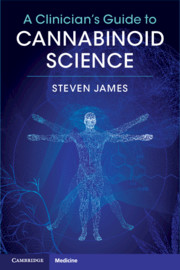Book contents
- A Clinician’s Guide to Cannabinoid Science
- Reviews
- A Clinician’s Guide to Cannabinoid Science
- Copyright page
- Dedication
- Contents
- Preface
- Section 1 An Introduction to Cannabinoid Science
- Section 2 Potential Therapeutic Uses of Cannabinoids in Clinical Practice
- Chapter 6 Cannabinoids and Pain
- Chapter 7 Cannabinoids and Neuropsychiatry
- Chapter 8 Cannabinoids in Sleep and Circadian Rhythms
- Chapter 9 Cannabinoids and Inflammation and Autoimmune Disorders
- Chapter 10 Cannabinoids and the Eye
- Chapter 11 Cannabinoids and the Skin
- Index
- References
Chapter 7 - Cannabinoids and Neuropsychiatry
from Section 2 - Potential Therapeutic Uses of Cannabinoids in Clinical Practice
Published online by Cambridge University Press: 12 October 2020
- A Clinician’s Guide to Cannabinoid Science
- Reviews
- A Clinician’s Guide to Cannabinoid Science
- Copyright page
- Dedication
- Contents
- Preface
- Section 1 An Introduction to Cannabinoid Science
- Section 2 Potential Therapeutic Uses of Cannabinoids in Clinical Practice
- Chapter 6 Cannabinoids and Pain
- Chapter 7 Cannabinoids and Neuropsychiatry
- Chapter 8 Cannabinoids in Sleep and Circadian Rhythms
- Chapter 9 Cannabinoids and Inflammation and Autoimmune Disorders
- Chapter 10 Cannabinoids and the Eye
- Chapter 11 Cannabinoids and the Skin
- Index
- References
Summary
Jacques-Joseph Moreau was a French psychiatrist in the nineteenth century and an early contributor to the field of psychopharmacology. During a trip in the 1830s to Egypt to study medical customs in the Middle East, Moreau was introduced to hashish, a dried resin from the marijuana flower, as a treatment for both physical and behavioral ailments.
Information
- Type
- Chapter
- Information
- A Clinician's Guide to Cannabinoid Science , pp. 86 - 99Publisher: Cambridge University PressPrint publication year: 2020
